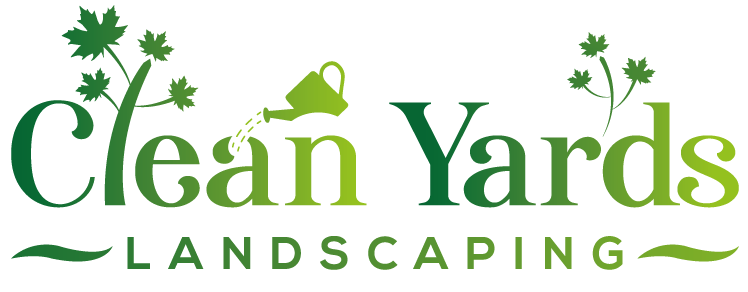Kars Homeowners: Summer Deadheading Secrets for More Blooms
Quick Guide to More Blooms:
- Deadheading (removing faded flowers) redirects plant energy to produce more blooms instead of seeds.
- Regularly snip or pinch off spent flowers just above a set of healthy leaves or a new bud.
- Use clean tools (fingers or bypass pruners) to prevent disease spread.
- Combine deadheading with proper watering, feeding, and mulching for best results.
- Key plants to deadhead include Petunias, Marigolds, Zinnias, Geraniums, Coneflowers, Daylilies, and Salvia.
Need help keeping your garden vibrant? Request a quote for professional garden maintenance today!
Introduction: Unlock a Summer of Colour in Your Kars Garden!
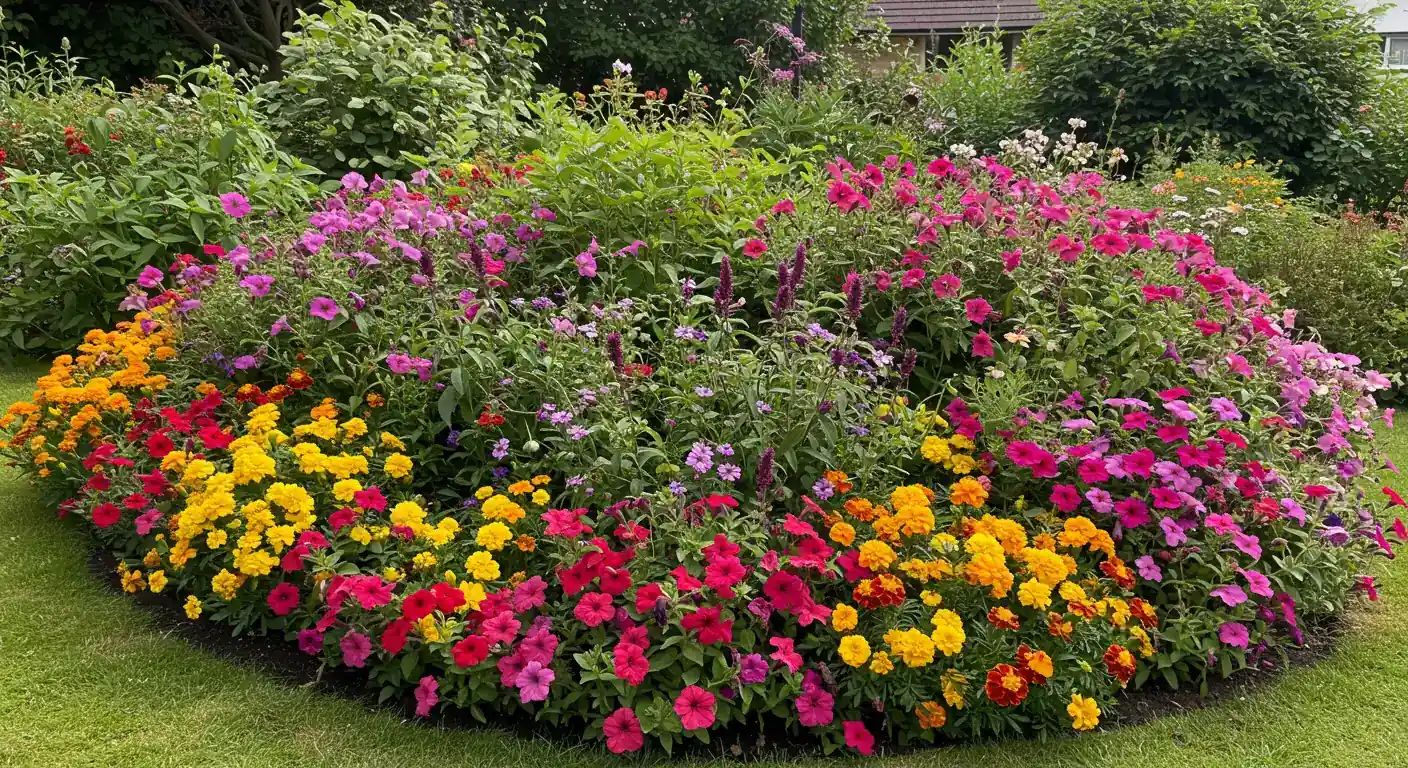
Hey there, Kars neighbours! Ready to make your garden the envy of the street, bursting with vibrant blooms all summer long? Let's chat about one of the simplest, yet most effective, gardening secrets: deadheading.
Now, "deadheading" might sound a bit dramatic, maybe even like a task for a floral secret agent. But really, it's just the fancy gardening term for removing the old, faded flowers from your plants. Think of it as giving your petunias or roses a little trim to tidy them up after their big show.
Why is this so important, especially for us here in Kars and the wider Ottawa area? Well, our growing season can sometimes feel like a sprint rather than a marathon! Deadheading is your secret weapon to extend the colour. When you snip off those spent blooms, you stop the plant from putting energy into making seeds. Instead, it thinks, "Oh! I'd better make more flowers!" This encourages repeat blooming, meaning more bang for your buck and a longer display in your garden beds and containers. Plus, it keeps your landscaping looking neat and can even help prevent some plant diseases. For a look at how professional care can transform a space, check out our project gallery.
Don't worry, it's not complicated! Stick around, and we'll walk you through the easy steps and practical tips to become a deadheading pro, ensuring your Kars garden is a riot of colour right through the summer months. You can always explore our comprehensive gardening services if you need a hand.
What's the Big Deal About Deadheading, Anyway?
Right, so we mentioned snipping off old flowers – deadheading. You might be thinking, "Seriously? My plants look okay, and I've got other things to do!" Fair enough! But trust us, this simple task packs a surprisingly big punch for your garden, especially here in the Ottawa area where we want to squeeze every last drop of colour out of our growing season.
Think of it like this: a plant's main mission in life, biologically speaking, is to reproduce. It pours energy into making beautiful blooms to attract pollinators, and once that job is done, its next big project is making seeds. Those faded flowers are basically shouting, "Mission accomplished! Time to make babies (seeds)!" All the plant's energy shifts towards seed production.
But you, the clever gardener, can intervene. By deadheading – removing those spent flowers before they set seed – you essentially trick the plant. It thinks, "Whoa, wait! The seed-making process got interrupted. Plan B: Make more flowers!" This redirection of energy is the magic behind deadheading. Instead of focusing on seeds, the plant channels its resources back into producing more glorious blooms. For many annuals and perennials, this means wave after wave of colour throughout the summer.
So, what are the perks?
- More Flowers, Longer Show: This is the big one! You get significantly more flowers for a much longer period. Keeping plants blooming vigorously through the heat is key, something covered in guides like the Barrhaven summer plant health guide for new homeowners. In places like Nepean and Barrhaven, extending that vibrant display makes a huge difference to your summer enjoyment.
- Tidier Garden Beds: Let's be honest, shriveled, brown flower heads aren't the prettiest sight. Deadheading instantly neatens up your plants and improves the overall look of your landscaping. A clean garden just feels better! Look up Clean Yards on Google to see reviews from happy clients with tidy gardens!
- Healthier Plants: Removing decaying flowers can prevent fungal diseases from taking hold, especially in damp conditions. It also stops the plant from wasting energy on seed production, keeping it stronger overall. This proactive care complements other health strategies, like ensuring your plants are thriving from the start; a Nepean spring garden health scan saves plants can identify issues early on. Remember, healthy soil and good drainage are also vital – different soils, like the clay common around Embrun, require specific approaches you can read about in the Embrun homeowners' spring garden install guide for clay. Even foundation issues like poor water runoff impact plant health, underscoring how Nepean site grading can prevent spring flooding and soggy roots.
- Prevents Unwanted Self-Seeding: For some enthusiastic plants, deadheading stops them from dropping seeds everywhere and popping up where you don't want them next year.
It might seem like just one small task in the grand scheme of gardening, but deadheading consistently pays off with a more beautiful, vibrant, and healthy garden. And if keeping up with tasks like this feels overwhelming, remember there are always professional garden maintenance services available to help keep your Ottawa garden looking its best! You can easily book an estimate to see how we can help.
Timing and Technique: Getting Your Snip On!
Okay, garden gurus, let's talk timing and technique! Knowing when and how to deadhead is key to keeping those gorgeous blooms coming all summer long. Think of yourself as a floral hairdresser – giving your plants the perfect trim to encourage more colour!
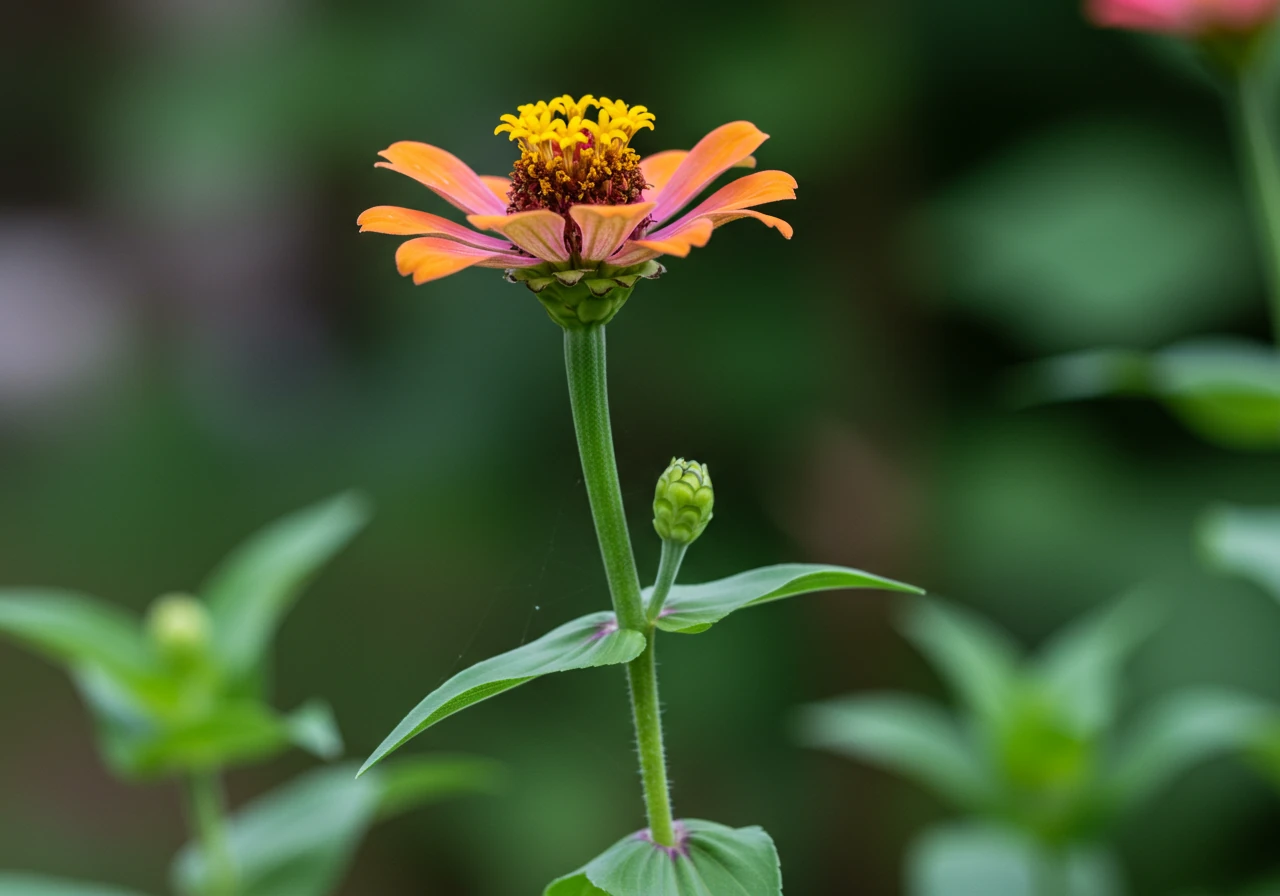
When's the Best Time to Snip?
Timing isn't super complicated: just keep an eye on your flowers. As soon as a bloom starts to fade, wilt, or lose its petals, it's time for it to go. Don't wait until it's completely brown and crispy! The sooner you remove the spent flower, the quicker the plant gets the message to produce more.
Make deadheading a regular part of your gardening routine throughout the Ottawa growing season. A quick stroll through your garden beds every few days with your snips (or just your fingers!) is usually enough. Consistency is key – think of it as ongoing garden maintenance that pays off big time in continuous colour.
How to Make the Cut: Techniques for Different Plants
Where you snip depends on how the plant grows:
- Single Flowers on Stems (like Zinnias, Marigolds, Coneflowers): Follow the faded flower stem down to the first set of healthy leaves or a visible side bud. Make your cut just above this point. Cutting here encourages new growth from that spot.
- Flowers on Spikes (like Delphiniums, Salvia, Snapdragons): You can snip off individual faded flowers from the bottom up as they fade. Once the whole spike is looking tired, cut the entire stalk back, again, usually down to a set of healthy leaves or new growth near the base.
- Bushy Plants with Lots of Small Flowers (like Petunias, Coreopsis, Alyssum): For these, you can often just pinch off the faded blooms with your thumb and forefinger – it’s surprisingly satisfying! If the whole plant starts looking straggly or "leggy," don't be afraid to give it a light haircut or "shear" it back by about a third using clean garden snips. This often rejuvenates the plant for another flush of blooms. This is often included in our Kars garden clean up service.
Your Quick-Snip Guide:
- Spot the Fader: Identify flowers that are past their prime (fading, wilting).
- Tool Up: Use clean fingers for soft stems (pinching) or sharp, clean bypass pruners/snips for tougher ones. Clean tools prevent spreading plant diseases!
- Find the Spot: Look for the right place to cut – just above a leaf node, bud, or down the stem as described based on plant type.
- Snip or Pinch: Make a clean cut or pinch.
- Tidy Up: Toss the spent flowers into your compost bin or City of Ottawa Green Bin (unless diseased). Easy peasy!
Remember, healthy plants respond best to deadheading. Good soil health, like managing the clay or sandy loam common around areas like Richmond and Metcalfe, ensures your plants have the energy reserves to keep blooming. Sometimes, enhancing plant health requires more comprehensive work; a task often included in a Metcalfe property cleanup service.
Consistent deadheading might feel like another chore, but the payoff in extended colour and healthier plants is worth it. Of course, if your summer schedule is packed, remember that keeping beds tidy is part of many professional garden care services. When considering any service, from a quick tidy like the Kars garden clean up service to ongoing maintenance, it's always smart to understand exactly what's included – checking the terms and conditions beforehand is a good habit. Now, grab those snips and get ready for more blooms!
Explore Our Garden Care ServicesYour Ottawa Garden All-Stars: Deadheading Guide
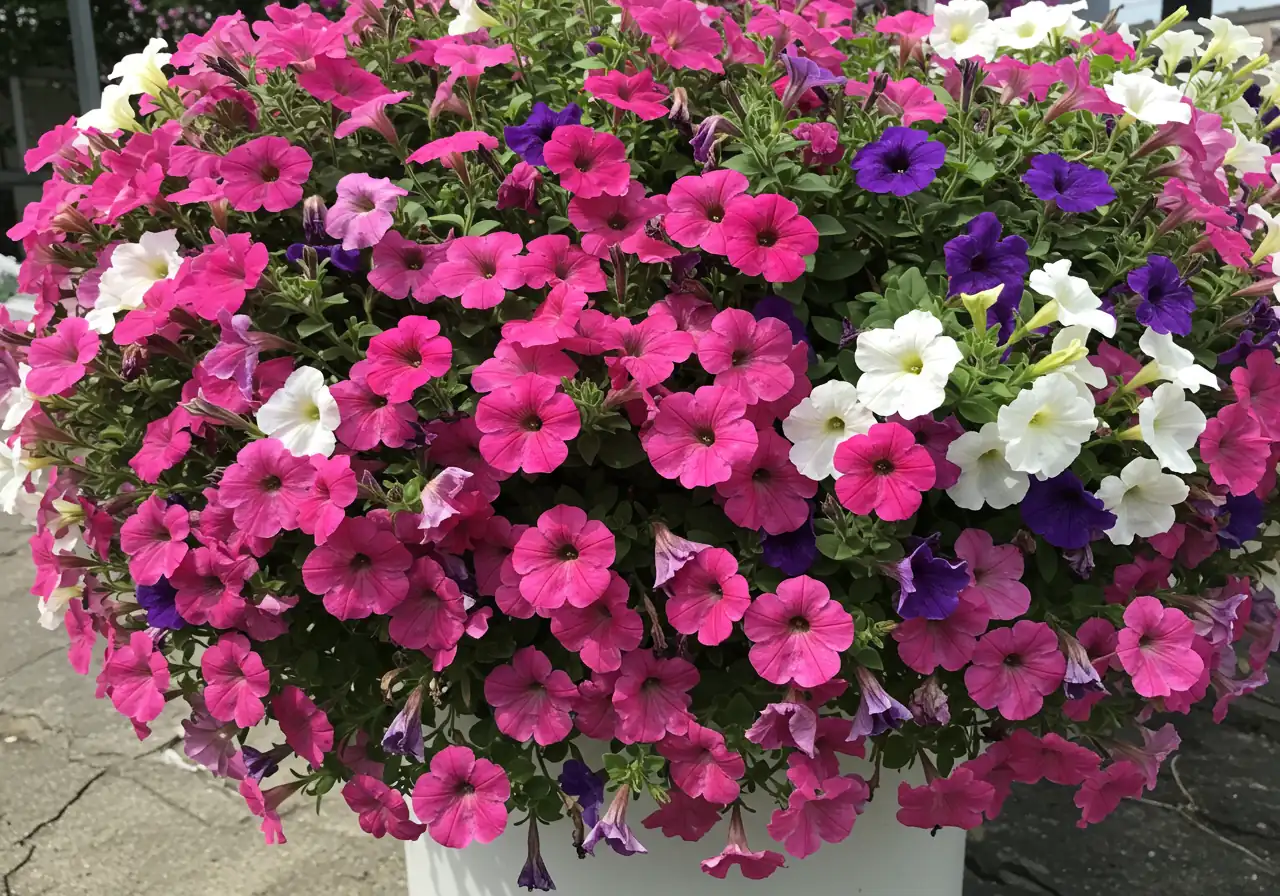
Alright, let's get down to the nitty-gritty! You've got the why and the how of deadheading, but which plants in your Ottawa garden need this special attention? Let’s talk about some of the floral celebrities you likely have blooming right now, from Manotick to Greely, and how to keep them looking sharp.
Not every plant needs the same treatment. Some are divas demanding regular attention, while others are pretty low-maintenance. Here’s a quick guide to deadheading some common Ottawa summer blooms:
Popular Annuals (Need Regular Deadheading for Non-Stop Colour):
- Petunias: These prolific bloomers need consistent pinching. Simply pinch or snip off the faded flower and the little swelling developing behind it (that’s the seed pod!). If they get leggy (long, bare stems), don't hesitate to give them a haircut, shearing them back by up to half mid-summer to encourage bushier growth and more blooms.
- Marigolds: Easy peasy! Just snap off the spent flower head with your fingers or snips. Follow the stem down to the next set of leaves and snip just above it.
- Zinnias: Similar to marigolds. Cut the stem holding the faded flower back to just above a set of healthy leaves or a side shoot. This encourages branching and more flowers.
- Geraniums (Pelargoniums): Snap the flower stalk off at its base, right where it joins the main stem. This keeps them looking tidy and encourages more blooms.
Common Perennials (Benefit from Deadheading):
- Coneflowers (Echinacea): You can deadhead these for continued blooming through the summer. Snip the faded flower stalk back to just above a set of leaves or a new bud. However, you might choose to leave some later-season flower heads on; they provide winter interest and seeds for birds! For expert advice on perennials, consider consulting resources like the Master Gardeners of Ottawa-Carleton.
- Daylilies (Hemerocallis): Each flower lasts only a day (hence the name!). Snap off the spent blooms daily to keep the plant looking neat. Once all the buds on a single stalk (called a scape) have finished flowering, cut the entire scape back to the base.
- Salvia (Perennial Sage): When a flower spike starts to fade, cut the entire spike back to the base or just above a set of new leaves lower down. This often encourages a second flush of colour.
- Shasta Daisies: Cut the faded flower stems back to the basal foliage (the leaves at the bottom of the plant) to encourage more blooms and keep the plant looking tidy.
Quick Reference Table:
| Plant | Deadheading Method | Frequency |
|---|---|---|
| Petunias | Pinch/snip flower + seed pod | Very Frequent |
| Marigolds | Snap/snip spent flower head | Frequent |
| Zinnias | Cut stem back to leaves/side shoot | Frequent |
| Geraniums | Snap flower stalk at base | Frequent |
| Coneflowers | Snip stem above leaves/bud (optional late season) | As needed |
| Daylilies | Snap off individual spent flowers daily; cut scape when done | Daily/As needed |
| Salvia | Cut entire faded spike back | As needed |
| Shasta Daisies | Cut faded stem back to base foliage | As needed |
The Easy-Going Pals: Plants That Don't Need Deadheading
Good news! Some plants are perfectly happy doing their own thing and don't require deadheading for continued blooms or plant health. These include:
- Hostas: Grown for foliage, their flower stalks can be cut back after blooming if you prefer, but it's not necessary for plant health.
- Astilbe: Their feathery plumes remain attractive even after fading, adding texture to the garden. Many gardeners leave them for winter interest.
- Bleeding Hearts: These spring bloomers generally go dormant after flowering; deadheading won't encourage more blooms.
- Many Newer Impatiens Varieties: Some modern cultivars are "self-cleaning," meaning the faded flowers drop off on their own. Check the plant tag!
Keeping up with deadheading is a key part of regular garden maintenance that significantly boosts your garden's colour. It prevents the landscaping from looking tired mid-summer. Of course, gardening involves more than just deadheading; sometimes a full seasonal tidy-up is needed. If your flower beds or entire yard feel overwhelming, professional help is available. Services ranging from a focused Marionville garden clean up service to a comprehensive Ottawa property cleanup service can tackle everything from weeding to, yes, deadheading! Keeping things tidy is essential, whether it's managing flower beds or handling bigger tasks like those covered by a Marionville yard cleanup service. Remember, consistent attention, whether DIY or professional, is what keeps your Ottawa garden looking its best throughout the growing season. Don't let spent blooms detract from your beautiful space; a little tidying goes a long way, and sometimes a thorough property clean up is the perfect reset.
Gearing Up: Tools & Eco-Friendly Clean-Up
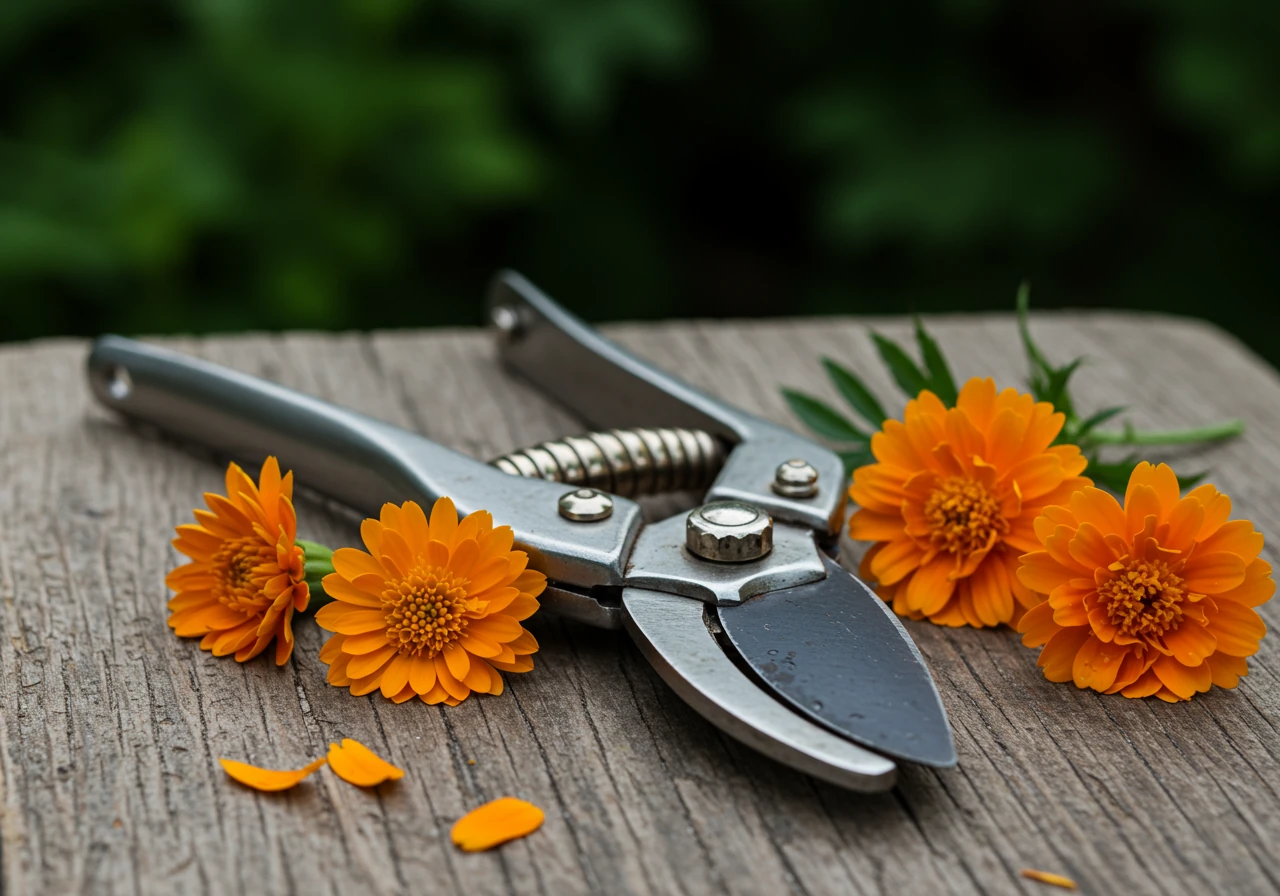
Alright, let's talk gear! You don't need a whole shed full of fancy gadgets for deadheading, but having the right tools makes the job quicker and better for your plants. Think of it like cooking – you could chop onions with a butter knife, but why would you? For many soft-stemmed flowers like petunias, your built-in tools – your trusty thumb and forefinger – are perfect for pinching off spent blooms. For anything woodier or tougher, a good pair of garden snips or bypass pruners is your best friend. Bypass pruners make clean cuts, which helps the plant heal faster – unlike anvil types that can crush stems.
Now, here’s a super important tip, especially with Ottawa’s sometimes humid summers which can be a playground for plant diseases: Keep your tools clean! Seriously, dirty pruners can spread fungal spores or bacteria from one plant to another faster than gossip in a small town like Osgoode. Imagine giving all your roses the same cold! Wipe the blades with rubbing alcohol or a disinfectant wipe between plants, or at least after each gardening session. Clean tools are happy tools, and happy tools mean healthy plants!
So, you've snipped and pinched your way to potential floral glory. What do you do with the pile of faded flower heads? Let's be kind to Mother Earth! The absolute best place for most of your spent blooms and other green garden waste is your compost bin. This garden gold decomposes and turns into fantastic food for your flower beds, enriching the earth much like good Soil Preparation techniques. If you're in Ottawa, your Green Bin is also a perfect destination for this organic matter. It’s a simple way to reduce landfill waste and contribute to a healthier environment.
However, there’s one big exception: if you suspect a plant has a disease (like powdery mildew or black spot), do not compost the removed parts or put them in the Green Bin. Bag them up and put them in your regular garbage to avoid spreading the problem. Keeping your garden tidy, including responsible disposal, is part of holistic landscaping care, much like adding a fresh layer through Mulching and Edging helps suppress weeds and retain moisture. If managing garden waste or tackling bigger tidying tasks feels like too much, remember that professional help is available. Companies dedicated to eco-friendly practices, which you can read more About Us, can handle the clean-up efficiently. Dealing with a larger volume of clippings, perhaps after a big seasonal tidy like a Marionville property cleanup service, can also be managed responsibly this way. We always appreciate clients who prioritize green practices – a big Thank You for helping keep Ottawa beautiful and sustainable!
Bloom Boost Comparison (Estimated)
Regular deadheading significantly impacts the number of blooms produced over the summer compared to not deadheading.
(Chart represents illustrative bloom potential percentage)
Beyond the Snip: Fueling Non-Stop Summer Blooms
Okay, snipping those spent flowers is a fantastic start, but think of it like tuning up just one part of your car engine. For truly non-stop summer blooms, your plants need the whole package deal! Deadheading tells them to make more flowers, but proper care gives them the energy to actually do it, especially during our dynamic Ottawa summers.
It's all about holistic plant health – happy, well-cared-for plants are the ones that put on the best colour show. Here’s what else fuels those flowers:
- Water Wisely: Plants need water to make flowers! During those hot, dry spells we sometimes get in areas like Manotick, consistent watering is crucial. Aim for deep watering less frequently, rather than shallow sips every day. This encourages strong roots. Soggy soil isn't good either, so let the top inch or so dry out between drinks. For local watering guidance, check resources from the Rideau Valley Conservation Authority.
- Feed Me, Seymour!: Blooming takes a lot of energy. Think of fertilizer as plant vitamins. A balanced fertilizer applied according to package directions, or one slightly higher in phosphorus (the bloom booster), can make a big difference, especially for heavy feeders in containers. Don't overdo it, though – too much nitrogen can mean lots of leaves but fewer flowers! It's a different need than what goes into focused lawn care programs, but just as important for overall landscaping appeal.
- Mulch Magic: A layer of organic mulch (like shredded bark) is like a cozy blanket for your soil. It helps keep moisture in (less watering stress!), suppresses weeds (less competition!), and keeps soil temperatures even. This lets your plants focus their energy on blooming instead of just surviving. Need help choosing? See our material selection guide.
- Pest Patrol: Keep an eye out for pesky bugs or signs of disease. Stressed plants won't bloom well. Catching problems early means less damage and healthier plants ready to flower. Healthy plants are the stars you see in thriving garden pictures – check out our project gallery for inspiration!
Simple Summer Bloom Care Timeline:
- 📅
Early Summer (June)
Check mulch depth (2-3 inches), start regular deadheading, monitor water needs as temps rise. Set up any reminders or service requests via the convenient customer portal if you use professional services. And hey, managing accounts online is easy, just be sure you're familiar with how we handle your info by reviewing our privacy policy.
- ☀️
Mid-Summer (July/August)
Be consistent with deadheading! Water deeply during dry spells. Consider a mid-season fertilizer boost for annuals and heavy-blooming perennials. Scout for pests/diseases. If you need a full refresh, consider an Ottawa yard cleanup service.
- 🍂
Late Summer (Late Aug/Sept)
Continue deadheading most plants (maybe leave some coneflowers for birds!), adjust watering as temperatures cool. Prepare for fall, perhaps with a Metcalf yard cleanup service if you're in that area.
Taking this well-rounded approach ensures your plants have everything they need to keep pumping out those gorgeous blooms. It reflects a commitment to comprehensive care, a philosophy central to how we operate – you can learn more About Us and our approach to creating beautiful, healthy Ottawa gardens. Happy gardening!
Summer Deadheading Secrets: Quick Tips
Feeling a bit overwhelmed by all the gardening advice? No worries! Here are the super-quick secrets to becoming a deadheading pro and keeping those blooms bursting all summer long in your Ottawa garden, whether you're in Nepean or closer to the countryside:
- Be a Swift Snipper: Don't wait for flowers to get totally brown and crispy! As soon as a bloom starts to fade, snip or pinch it off. Doing this regularly tells your plants, "Make more flowers, please!" This consistent attention is key for vibrant summer colour.
- Know Where to Cut: Technique matters! For flowers on single stems (like Coneflowers or Zinnias), follow the stem down and snip just above a set of leaves or a new bud. For bushy plants loaded with small flowers (like Petunias or Alyssum), pinching off the spent bloom and the little nub behind it is perfect. Getting it right encourages more growth. A proper garden install starts plants off right.
- Keep Tools Squeaky Clean: Honestly, this is a biggie! Dirty snips can spread yucky plant diseases faster than you can say "powdery mildew." Give your pruner blades a quick wipe with rubbing alcohol or a disinfectant wipe between plants, or at least after each gardening session. Healthy plants = more flowers!
- Fuel the Flower Factory: Deadheading tells plants to bloom, but they need energy to bloom! Remember consistent watering (especially during those Nepean heat waves), a bit of bloom-boosting fertilizer for heavy feeders like annuals in pots, and a nice layer of mulch. Considering different mulch options? Our guide to choosing the best garden materials can help you decide what's right for your landscaping.
- Tidy Up & Call for Backup if Needed: Don't just snip and drop! Toss those spent blooms in the compost bin (unless they looked diseased – then put them in the garbage). If the deadheading, weeding, and general summer garden upkeep feel like too much, don't sweat it. A professional touch-up, maybe an Ottawa yard cleanup service, can get things back in shape quickly. For neighbours further out needing specific attention, targeted help like a Metcalf yard cleanup service is also available. Remember, managing any scheduled services with us is easy via our convenient customer portal. You can always contact us with questions.
Keep these tips in mind, grab your snips (or just use your fingers!), and you'll be amazed at the difference a little regular tidying makes in your Ottawa summer garden! Check our estimate feedback to see what others say.
Your Kars Deadheading Questions Answered (FAQ)
Okay, let's tackle those common questions about deadheading you might have right here in Kars! Snipping spent blooms seems simple, but knowing the local nuances can make all the difference.
With our sometimes shorter Ottawa growing season, does deadheading really make that much difference?
Absolutely, it makes a HUGE difference! Think of our growing season like a fantastic summer party – you want the music (or in this case, the colour) to last as long as possible! Deadheading tricks plants into producing more blooms instead of putting energy into seeds. For annuals especially, consistent deadheading from early summer onwards means significantly more flowers packed into those precious warm months. It keeps your garden beds looking vibrant right through until the cooler weather arrives. Neglecting it means plants often "finish" flowering much earlier. If keeping up feels like a chore during the busy summer, remember that regular tidying is a key part of many professional garden care packages, like an Ottawa garden clean up service, which can help maximize your bloom time.
I live near Manotick where the soil can be quite heavy clay. Does this impact how well my plants respond to deadheading?
That's a great question! While the act of deadheading itself (snipping the flower) isn't directly changed by soil type, your soil definitely affects the plant's overall health and ability to produce new blooms after you deadhead. Heavy clay soil, common around Kars and Manotick, can sometimes stay too wet or compact, stressing plant roots. Stressed plants won't rebloom vigorously, even if you deadhead perfectly. Improving your soil structure with compost helps immensely! Ensure good drainage so plants aren't sitting in soggy soil. Healthy roots in well-amended soil provide the energy needed for the plant to respond positively to deadheading. Tackling soil improvement can sometimes be part of larger jobs; for instance, preparing soil properly is a crucial step in services like a Metcalf garden clean up service if new plantings or soil amendments are involved. Proper soil preparation is key.
Help! I've been deadheading my petunias, but they still look straggly and aren't blooming much. What am I doing wrong?
Ah, the classic petunia problem! Deadheading is just one piece of the puzzle. If your petunias are looking leggy (long stems, few leaves or flowers), they might need more than just pinching off faded blooms. Consider these points:
- Sunlight: Are they getting at least 6 hours of direct sun? Petunias need sun to bloom well.
- Water: Are they consistently watered, but not waterlogged? Container petunias dry out fast in summer heat.
- Food: Have you fed them? Petunias are heavy feeders! A dose of bloom-boosting fertilizer every few weeks works wonders.
- The Big Chop: Sometimes, they just need a rejuvenating "haircut." Don't be afraid to shear the whole plant back by about a third mid-summer. It looks drastic for a week or two, but they often bounce back bushier and full of blooms. Remember, strong plant health starts from the ground up; poor soil or drainage can undermine everything, much like inadequate site preparation can affect how well grass establishes after sod installation. Ensure the basics are right first!
Deadheading seems to create a lot of waste. What's the most eco-friendly way to deal with all the spent flowers in Kars? Can I leave some on the plants?
Great thinking about the environment! The best place for your spent blooms and other green gardening trimmings is usually your compost bin or the City of Ottawa Green Bin program. They break down beautifully and contribute to nutrient-rich compost or biogas. The only exception is if you suspect disease (like powdery mildew or fungal spots) – bag those diseased bits separately and put them in the regular garbage to prevent spreading issues. And yes, you absolutely can leave some spent flowers, especially later in the season! Coneflower (Echinacea) and Black-Eyed Susan (Rudbeckia) seed heads, for example, provide food for birds over winter and add lovely texture to the winter landscape. It's about finding a balance between tidiness, encouraging blooms, and supporting local wildlife. If you find yourself with a large volume of garden waste after a big cleanup, services like a Marionville property cleanup service can often handle the disposal responsibly.
Deadheading all my garden beds takes forever, especially with my busy summer schedule here in Kars! Any tips to make it faster or easier?
We hear you! It can feel like another task on the never-ending gardening list. Here are a few time-saving tricks:
- Prioritize: Focus your efforts on the plants that give the most bang for your buck – typically annuals like petunias, marigolds, and zinnias, and repeat-blooming perennials like Salvia and Coreopsis. Plants grown mainly for foliage (like Hostas) don't need it.
- Little and Often: Instead of one massive deadheading session, try doing a quick 10-15 minute walk-through with your snips every couple of days. It's less daunting and keeps things consistently tidy.
- The Shear: For bushy plants with tons of tiny flowers (like Sweet Alyssum or Lobelia), sometimes a light shearing with hedge shears or snips once they start looking tired is much faster than pinching individual blooms. They'll usually regrow and rebloom quickly.
- Know When to Call In Help: If life gets too hectic or the garden feels overwhelming, don't hesitate to look into professional help. Many landscaping companies offer maintenance packages that include regular deadheading and tidying, keeping your Kars garden looking sharp without you lifting a finger (or snips!). Consider our dedicated Marionville garden clean up service if you're nearby.
Boosts Blooms & Tidiness
Deadheading is crucial for encouraging plants to produce more flowers instead of seeds. It redirects the plant's energy, resulting in a longer blooming period and more vibrant colour throughout the summer. Plus, it keeps your garden looking neat by removing unsightly faded blossoms. Regular deadheading can also help prevent certain fungal diseases.
Simple Snipping Methods
The technique depends on the plant:
- Single Stems (Zinnias): Cut stem back to just above a set of leaves or a side bud.
- Spikes (Salvia): Cut the entire faded spike back to the base or new growth.
- Bushy (Petunias): Pinch off faded blooms and the small pod behind them. Shear back leggy plants by 1/3 mid-season.
- Always use clean tools!
Check our general garden maintenance page for more tips.
Ottawa Favourites to Deadhead
Focus your deadheading efforts on these common garden stars for maximum impact:
- Annuals: Petunias, Marigolds, Zinnias, Geraniums
- Perennials: Coneflowers, Daylilies, Salvia, Shasta Daisies
Remember, some plants like Hostas or Astilbe don't require deadheading.
Conclusion: Keep Your Kars Garden Blooming All Summer Long!
So there you have it – the not-so-secret secret to keeping your Kars garden overflowing with beautiful blooms all summer! Deadheading might sound fancy, but it's truly one of the easiest ways to maximize colour during our precious Ottawa growing season. By simply snipping or pinching off those faded flowers, you encourage your plants to focus on producing more stunning blooms, keeping your garden beds looking lively and vibrant, not tired and ready for a nap.
Think of it as giving your garden a continuous boost of energy! Consistent deadheading, combined with good watering and maybe a little plant food, is your ticket to a summer-long flower show that could make neighbours in nearby Manotick just a little bit envious. Don't be shy – grab those snips and give it a go!
Feeling short on time or prefer to leave the gardening to the pros? We get it! Keeping up with summer tasks can be a lot. Let us help keep your Kars, Manotick, or Greely garden looking its absolute best with our professional garden maintenance services. Ready for more landscaping inspiration or need specific advice for your yard? Explore our other gardening tips online or contact us today to discuss your project! Happy gardening, and here's to a beautifully blooming summer!
Book Your Free Estimate Now!